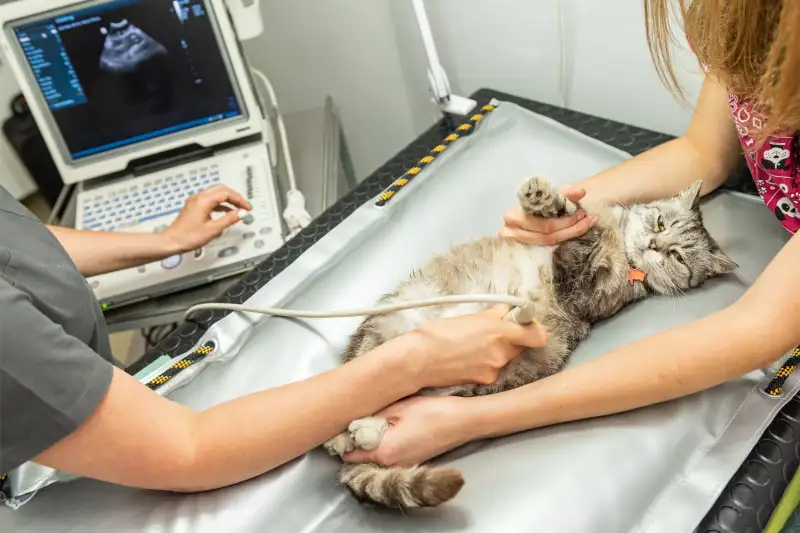Pet Insurance May Finally Get Easier and Cheaper to Buy

To shop around for pet insurance — as you should before you buy — is to discover how difficult policies are to compare and how pricey they can be. But those pain points may diminish, thanks to a new collaborative effort to standardize policies and boost competition.
Health coverage for cats and (especially) dogs is a booming industry; more than 20% more pet owners took out policies in 2019 (the last available year of data) than in 2018, according to the North American Pet Health Insurance Association (NAPHIA). But that growth is also increasing the spotlight on shortcomings in pet insurance and the way it's sold.
Now state insurance officials, the insurance industry, veterinarians, and consumer groups have come together to create a pet insurance working group at the National Association of Insurance Commissioners (NAIC). Its goal: To create a model law to govern pet insurance offerings across the U.S.
Here’s what the group aims to do, and how that could affect— positively — the experience of buying health coverage for your pooch or kitty.
Standardizing policy features
Health insurance for humans differs widely in cost, coverage, and more, depending on the company, plan, and state you live in. But different policies at least share some key definitions that help you to compare the offerings from different insurers in different places.
Not so for pet insurance. “Today, there is no commonality,” says Rick Faucher, who is the Phoenix, Arizona-based president of the NAPHIA board of directors. “Policy language varies from state to state and from company to company.”
Take, for example, the language pet insurers use to define pre-existing conditions. These conditions aren't covered by insurance, as a rule, and so a lot can ride on how a policy defines them.
Right now, the varying definitions of pre-existing conditions hamper comparison. Healthy Paws, for example, defines a pre-existing condition as one that’s diagnosed or shows symptoms at any time before coverage begins — and stops being so if the pet is cured and free of symptoms and treatments for 180 days, except for knee and ligament conditions. On the other hand, Trupanion says a pre-existing condition is one that shows symptoms or requires treatment during the 18 months before enrollment.
You're forgiven if those definitional differences leave you confused about what's actually covered and when. It gets worse for pet owners who move, or compare notes with faraway friends. State laws about pet insurance sometimes require companies to offer one set of coverage details in one state and another set in a different one.
Standardizing definitions, the NAIC hopes, will mean less confusion for consumers and insurance companies alike. Don Beatty, who is deputy commissioner at the Virginia bureau of insurance and chairs the NAIC’s pet insurance working group, says a model law would give consumers a better sense of what a policy does and doesn’t do for them. “Everyone wants consumers to know that up front.”
Simplifying selling pet insurance
The model law also hopes to address the question of who can sell pet insurance. Right now, anyone who sells the product needs to be licensed to sell property and casualty coverage first — legally, pets are considered property — then trained on the particulars of pet insurance.
The model law aims to eliminate the need for expertise in home and auto insurance in order to sell health insurance for pets. Sellers could instead get a limited license to sell just pet insurance. At present, says NAPHIA executive director Kristen Lynch, the need to pass the property and casualty exam, and then get more training, means that pet insurance salespeople aren’t immediately productive. And that, in turn, raises costs for insurance companies, she says.
Broadening who can sell pet insurance, and simplifying the qualifications to do so, could also widen the places at which consumers could buy coverage. Lynch says it might allow agents with limited licenses to sell pet insurance from veterinarians’ offices, grooming and dog daycare facilities, or pet supply stores.
Lower prices, maybe
Greater standardization of language could also cut administrative costs for insurers, who could pass along some of those savings to pet owners, say industry spokespeople. Further savings could come from the option to have some agents sell only pet insurance.
That would in theory leave insurers more room to compete on price, says pet-insurance working group chair Beatty. “A model law helps support price competition,” he says.
The model-law effort won’t yield immediate benefits. The NAIC will need several months to finish the process, and state legislators will likely need months (or, in some case, even years) to adopt any model law that the NAIC ultimately produces.
In the meantime, the issues that are driving the effort only underline the need to shop carefully for pet insurance, even if that is currently more difficult than it should be. Understand what policies do and don’t cover, compare prices and coverage, and ultimately decide which policy, if any, makes sense for your budget and approach to pet ownership and care.
More from Money
What Pet Insurance Can Cover, From Aggression Therapy to Arthritis
10 Best Pet Insurance Companies of 2020
Pet Insurance Covered $25,000 of My Vet Bills: Here’s My Takeaway for Beginners